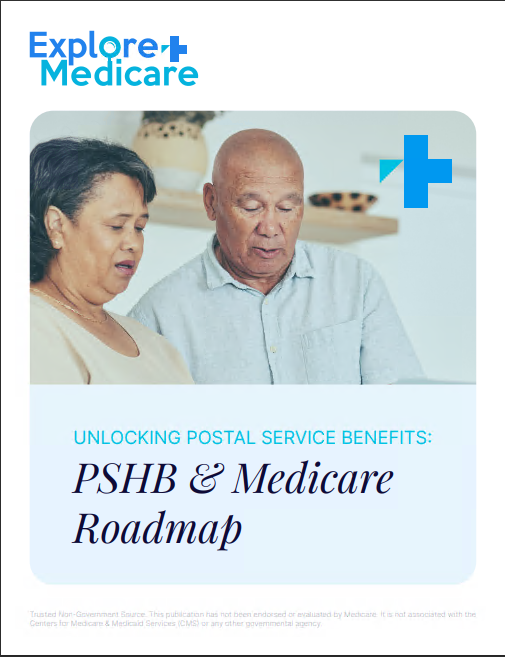Key Takeaways
-
Medicare Part B plays a central role in covering doctor visits, preventive screenings, and outpatient services. Understanding what is and isn’t covered can help you make informed healthcare choices.
-
You typically pay a monthly premium, annual deductible, and 20% coinsurance for most services under Part B. These costs can vary based on your income and whether you have other coverage.
Why Medicare Part B Is Essential for Your Doctor Visits
Medicare Part B is one of the two parts of Original Medicare, and it’s designed specifically to help with outpatient medical services. If you see your doctor regularly, whether for routine checkups, specialist referrals, or chronic condition management, Part B is a crucial part of your coverage.
Unlike Medicare Part A, which focuses on hospital stays and inpatient care, Part B covers:
-
Doctor office visits
-
Lab tests and diagnostic screenings
-
Preventive care like flu shots and cancer screenings
-
Durable medical equipment (DME) such as walkers or home oxygen
-
Outpatient surgeries and services
Without Medicare Part B, these services would be entirely out of pocket unless you have other insurance.
What You Pay Under Medicare Part B in 2025
In 2025, the costs for Medicare Part B include:
-
Monthly premium: Most people pay a standard monthly amount, which increases if your income is above a certain level.
-
Annual deductible: You must meet an annual deductible before Part B begins to pay its share. For 2025, that deductible is $257.
-
Coinsurance: After meeting your deductible, you typically pay 20% of the Medicare-approved amount for most doctor services, outpatient therapy, and durable medical equipment.
Higher-income individuals pay more due to Income-Related Monthly Adjustment Amounts (IRMAA), which are based on your tax returns from two years ago—in this case, your 2023 return.
Enrollment and Timing: When You Need to Sign Up
You become eligible for Medicare at age 65. Your Initial Enrollment Period (IEP) spans seven months:
-
Starts three months before the month you turn 65
-
Includes the month you turn 65
-
Ends three months after your birthday month
If you don’t enroll in Part B when you’re first eligible and don’t have other creditable coverage (such as through an employer), you may face late enrollment penalties. These penalties increase your premium for life.
There are also other enrollment periods:
-
General Enrollment Period (GEP): January 1 to March 31 each year, with coverage starting the following month.
-
Special Enrollment Period (SEP): Triggered by specific events like losing employer coverage.
Coverage for Doctor Visits: What’s Included
Medicare Part B is known for its broad coverage of outpatient services. Here’s what you can expect when it comes to seeing your doctor:
Preventive Services
Part B covers many preventive services at no cost to you if the provider accepts Medicare:
-
Annual wellness visit
-
Screenings for cancer (breast, prostate, colorectal, lung)
-
Flu, pneumonia, hepatitis B, and COVID-19 vaccines
-
Cardiovascular screenings
-
Diabetes screenings and self-management training
These preventive benefits help you catch health issues early, often before symptoms appear.
Medically Necessary Services
Medicare Part B also pays for services needed to diagnose or treat a medical condition:
-
Office visits to primary care or specialists
-
X-rays, MRIs, and CT scans
-
Minor surgeries performed in outpatient settings
-
Medications administered by a doctor (not self-administered prescriptions)
-
Mental health outpatient therapy
You’ll typically pay 20% of the Medicare-approved amount for these services after your deductible is met.
Telehealth and Virtual Visits
Telehealth became more widely used during the pandemic, and in 2025, Medicare continues to support virtual care for:
-
Mental health services
-
Chronic condition check-ins
-
General office visits when appropriate
These services are covered under Part B if you use an eligible provider and service.
What Part B Doesn’t Cover
While Medicare Part B offers wide-ranging coverage, it doesn’t cover everything. You’ll want to be aware of what’s excluded:
-
Most prescription drugs
-
Routine dental, vision, and hearing care
-
Long-term care or custodial care
-
Services from providers who don’t accept Medicare
-
Cosmetic procedures
For services not covered by Part B, you may need separate insurance, enroll in a broader plan, or pay out-of-pocket.
How Coordination with Other Coverage Works
Many people have other health coverage in addition to Medicare. Part B typically acts as either primary or secondary coverage depending on your situation:
-
Still working with employer coverage: If your employer has fewer than 20 employees, Medicare usually pays first.
-
Retired with retiree health benefits: Medicare generally pays first, and your retiree plan may cover what Medicare doesn’t.
-
Dual-eligible for Medicaid: Medicare pays first, and Medicaid may cover coinsurance, premiums, or other costs.
Coordination of benefits ensures that the right plan pays first, helping reduce your overall costs.
How to Check if Your Doctor Accepts Medicare
It’s important to confirm that your doctor participates in Medicare. There are three types of providers:
-
Participating providers: Accept Medicare and agree to Medicare-approved amounts as full payment.
-
Non-participating providers: Accept Medicare but may charge up to 15% more than the Medicare-approved amount.
-
Opt-out providers: Do not accept Medicare at all; you pay 100% of the cost.
If keeping your current doctor matters to you, always check their Medicare status before scheduling care.
Managing Out-of-Pocket Costs
Out-of-pocket costs can add up quickly with coinsurance and uncovered services. Here are some tips to manage your expenses:
-
Choose doctors who accept assignment (i.e., Medicare’s approved payment rate)
-
Schedule preventive care regularly to avoid health complications
-
Use in-network providers if you have additional insurance
-
Review your Explanation of Benefits (EOB) statements for accuracy
-
Ask your provider about cost estimates before procedures
Also consider if you need supplemental coverage to help cover gaps in Part B.
Annual Reviews and Coverage Updates
Each year, Medicare updates premiums, deductibles, and covered services. In 2025, be sure to review any changes during the Medicare Open Enrollment period, which runs from October 15 to December 7.
During this time, you can:
-
Make changes to Medicare Advantage or drug plans
-
Return to Original Medicare from an Advantage plan
-
Review any changes to your current plan’s coverage for the upcoming year
Even if you’re happy with your current coverage, it’s wise to review your Annual Notice of Change (ANOC) letter for updates.
Medicare Part B in 2025: Know Where You Stand
If seeing your doctor is an important part of your health routine, Medicare Part B is essential. With coverage for preventive care, office visits, outpatient services, and more, Part B ensures you can stay on top of your health.
However, knowing when to enroll, what it costs, and what’s not covered helps you avoid surprises. Be proactive and take time to review your needs and options each year.
For personalized help reviewing your Medicare choices or understanding how your doctor visits will be covered, talk to a licensed agent listed on this website.









